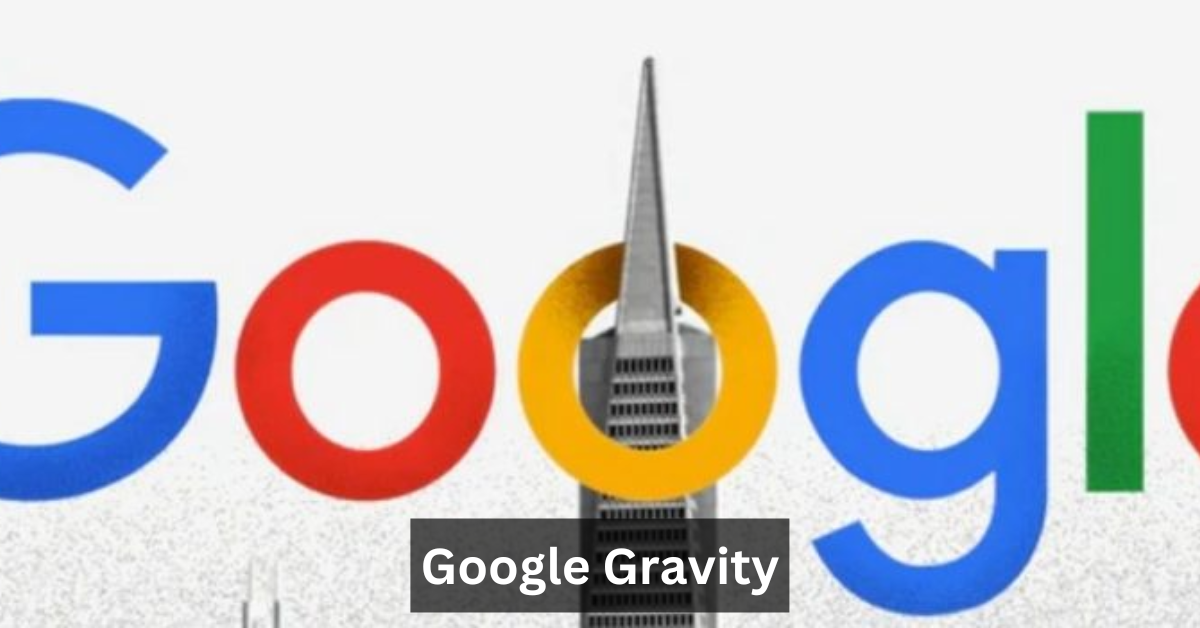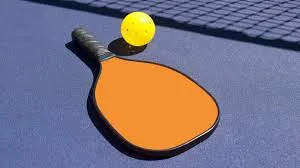Google Gravity is one of the most fascinating and fun-filled browser tricks ever introduced to the public through creative coding. This interactive experience simulates gravity using advanced JavaScript and HTML5 technologies, transforming the typical Google Search homepage into a collapsing display of physics-based movement. As soon as users trigger the feature, all elements of the page—like the search bar, buttons, and even the iconic Google logo—fall to the bottom of the screen, acting as though influenced by real-world gravity. It’s not only a captivating visual but also a clever example of how creative developers can bend the rules of static web pages.
This engaging Google Gravity trick is often categorized among the best Google Easter eggs, showcasing the playful side of one of the world’s most powerful tech companies—Google LLC. Though not an official Google product, the trick works through a clever use of browser scripting and has earned worldwide attention for its charm and simplicity.
The popularity of Google Gravity soared quickly after its launch. Users were amazed by the novelty and humor embedded in the experience. It didn’t just offer a moment of levity—it also displayed the incredible possibilities of interactive web pages created with modern web technologies. The experience resonated with a broad audience, from curious kids and casual web surfers to seasoned developers exploring the boundaries of what could be done with JavaScript browser experiments.
Because the experience felt like a digital magic trick, users began sharing it across social media platforms, blogs, and forums. Countless YouTube videos were created to showcase how it works, leading to millions of impressions and widespread enthusiasm. The Google Gravity effects became a prime example of how the internet can be both fun and technically impressive at the same time.
The Origin Story: Who Is Mr. Doob?
About Mr. Doob (Ricardo Cabello)
The mind behind Google Gravity is none other than Ricardo Cabello, also known as Mr Doob. He is a well-respected developer and creative technologist who has contributed immensely to the web development and digital art community. His works often blend technology with playfulness, offering users interactive and visual experiences that are both stunning and entertaining. Mr. Doob is especially known for his experiments that explore the capabilities of the browser, and Google Gravity stands out as one of his most popular projects to date.
His Other Creative Projects
Beyond Google Gravity, Mr. Doob has developed several browser-based experiments that have gained widespread acclaim. From visual audio experiences to 3D particle generators, his portfolio is filled with cutting-edge, accessible content that challenges traditional notions of what websites can do. He is also known for contributing to three.js, a powerful WebGL library that helps developers render 3D graphics in web browsers.
Connection to Google Experiments
Although Google Gravity was not created directly by Google LLC, it aligns perfectly with the company’s tradition of offering quirky features and hidden Google features through platforms like Google Experiments and Google Doodles. These fun tools and projects often emerge around holidays or special events, intended to surprise and entertain users. Mr. Doob’s work fits seamlessly into that culture, reflecting the same creative energy and commitment to user delight.
How to Activate Google Gravity
Step-by-Step Guide to Use Google Gravity
Using Google Gravity is simple and accessible to anyone with a modern browser. Just follow these steps:
- Open your preferred desktop browser, such as Chrome browser, Firefox, or Edge.
- Navigate to www.google.com.
- Type “Google Gravity” into the search bar.
- Instead of pressing Enter, click on the “I’m Feeling Lucky” button.
- Watch as gravity takes hold, and the page elements begin to tumble and fall.
This trick is powered entirely by JavaScript, making it one of the most iconic google search engine pranks online.
Using “I’m Feeling Lucky” Feature
The “I’m Feeling Lucky” button is essential to accessing Google Gravity. It bypasses the usual search results and redirects users straight to the interactive page—usually hosted by Mr. Doob or mirrored on various developer-friendly domains. The button itself has been the subject of many Google-based pranks and Easter eggs, and in this case, it provides a gateway to a unique, browser-based animation that surprises first-time users.
Tips for Accessing It on Modern Browsers
For Google Gravity to work flawlessly, JavaScript must be enabled in your browser. Some ad blockers or browser extensions may interfere with the scripting that allows the gravity simulation to take place. Additionally, this trick is optimized for desktops and may not render properly on mobile devices. If you’re experiencing a Google Gravity not working issue, try switching to the Chrome browser in incognito mode or disabling conflicting extensions.
Features and Effects of Google Gravity
Falling Interface Elements Explained
At the core of Google Gravity is a simulated gravity engine, which alters the behavior of standard web elements. Instead of staying anchored, the page’s interface components are freed to move, bounce, and fall in response to imaginary gravitational force. It transforms a standard browsing session into an immersive experience, combining tech innovation with a playful design.
Interactive JavaScript Mechanics
The magic of Google Gravity lies in its intelligent use of JavaScript and HTML5, along with elements of WebGL to simulate real-time physics. Users can drag, fling, and bounce the elements around the screen, which adds an unexpected level of interaction that’s usually not seen on static websites. This use of JavaScript browser experiments has inspired a generation of web developers to create their own playful digital features.
User Experience and Visual Tricks
From a user perspective, Google Gravity feels like a digital playground. The falling elements are more than just visual effects—they’re fully interactive, giving users control over how the chaos unfolds. The animation timing, elasticity of the elements, and randomness of the bounce create a playful, humorous atmosphere that keeps users engaged and coming back for more.
Different Versions of Google Gravity
Google Gravity Mirror
This version flips the interface horizontally, creating a reversed world of Google Gravity where everything appears mirrored. It’s an extra layer of challenge and fun, adding a disorienting twist to the classic trick.
Google Gravity Underwater
In this playful alternative, the entire interface floats underwater with a serene background. Buttons and text move as if submerged, reacting to virtual water physics. This adds a relaxing aesthetic and a touch of humor to the Google Gravity game experience.
Google Anti-Gravity and Zero Gravity
In the Google zero gravity version, page elements don’t fall but instead float away, simulating a space-like environment. This version contrasts the original gravity effect and gives users a whole new way to play with the interface.
Google Gravity Sphere and Space Tricks
Google Sphere is another browser trick where the homepage elements revolve in a circular motion, creating a 3D orbit-like appearance. It’s closely related to Google Gravity, offering similar enjoyment through a different visual dynamic.
Google Gravity Not Working? Here’s How to Fix It
Common Technical Issues
Users sometimes report that Google Gravity is not working, usually due to disabled JavaScript or incompatible browser extensions. The feature relies heavily on script execution, and any interruption in the code may prevent the gravity effect from loading.
Browser Compatibility (Chrome, Firefox, Edge)
Google Gravity works best on the Chrome browser, but also performs well on Firefox and Edge. Users should make sure their browsers are updated to the latest versions and that their JavaScript settings are turned on.
JavaScript Settings & Enabling Scripts
To enjoy Google Gravity, head to your browser settings and ensure JavaScript is enabled. If you’re still having trouble, clear your cache and cookies or temporarily disable your ad blockers and reload the page.
Similar Google Tricks and Easter Eggs
Google Sphere
As mentioned, Google Sphere rotates page elements in a circular orbit, offering another delightful twist on Google’s iconic interface.
Do a Barrel Roll
Typing “do a barrel roll” into Google Search will cause the entire page to spin 360 degrees—another creative Google Easter egg and cousin to Google Gravity in the world of search engine tricks.
Zerg Rush
A game inspired by the popular strategy game StarCraft, this trick causes tiny O’s to attack and destroy your search results. Like Google Gravity, it’s fun, interactive, and a beloved classic among internet users.
Askew, Blink HTML, and More Hidden Gems
Other fun Easter eggs include searching “Askew” to tilt the screen or “Blink HTML” to make certain words flash. All of these highlight the lighter side of the web, similar in spirit to Google Gravity.
Educational and Entertainment Value
Teaching Physics and Programming with Google Gravity
Google Gravity isn’t just entertaining—it’s also educational. Teachers and developers alike use it to introduce concepts like physics simulation, browser scripting, and frontend design. It’s a lighthearted way to teach JavaScript principles while keeping students engaged.
Fun for Kids, Students, and Developers
From classrooms to coding bootcamps, Google Gravity is an effective tool for sparking curiosity in web development and physics. Kids love its playful vibe, and developers appreciate the technical finesse behind it.
Integration in Tech Demonstrations and Web Design
Many use Google Gravity as a demo to show what’s possible with modern web technology. It demonstrates that interactive web pages can be both practical and delightful.
Behind the Scenes: The Technology Behind Google Gravity
HTML5, JavaScript, and WebGL
The power behind Google Gravity lies in the trio of HTML5, JavaScript, and WebGL. Together, these technologies create a seamless, interactive experience that pushes the boundaries of traditional websites.
How the Gravity Simulation Works
A simple yet robust gravity engine is employed to simulate the downward pull of elements. It calculates velocity, collisions, and bounce, mimicking real-world physics within the browser environment.
Open Source Inspirations
Mr. Doob’s creation is a testament to the strength of open source tools. His inspiration and code have helped shape future browser-based experiments.
Google Gravity for Mobile Devices
Is It Mobile-Friendly?
Google Gravity is designed primarily for desktops. Most mobile browsers don’t fully support the complex physics simulation due to screen constraints and limited JavaScript execution on mobile.
Limitations and Alternatives for Smartphones
Though mobile support is limited, some experimental apps and websites attempt to recreate the Google Gravity game on phones. Still, the full experience remains best on larger screens.
Mobile Browser Settings to Try
If you want to try it on mobile, ensure you’re using a full desktop version of the browser and JavaScript is enabled.
Is Google Gravity Safe to Use?
Security and Privacy Considerations
Using Google Gravity is generally safe. It’s a JavaScript-based front-end experiment and doesn’t collect data or pose any significant risk.
Third-Party Hosting and Trustworthiness
Make sure to use trusted sources like Mr. Doob’s original site or reputable mirrors. Avoid unfamiliar domains that may misuse the concept.
Is It a Google Product or a Fan Creation?
While it uses Google’s branding and interface, Google Gravity is an independent creation and not officially developed by Google LLC.
Fun Facts and Trivia About Google Gravity
Most Popular Queries Around It
People frequently search for terms like “how to activate Google Gravity,” “Google Gravity mirror,” or “Google Gravity not working,” showing its ongoing popularity in 2025.
Viral Social Media Moments
Google Gravity videos have amassed millions of views on YouTube, with influencers and creators reacting to the effect for entertainment and education alike.
Featured on YouTube and Memes
Countless memes have been created featuring Google Gravity, emphasizing its role in internet culture.
How to Create Your Own Version of Google Gravity
Basic Code Snippets in JavaScript
With basic knowledge of JavaScript and HTML5, you can recreate a simple version of Google Gravity using physics engines or animation libraries.
Using Web Development Tools to Replicate
Tools like three.js, GSAP, and WebGL provide powerful ways to replicate or enhance the Google Gravity trick.
Tips for Personalization and Hosting
Customizing your version with themes, fonts, or alternative behaviors can make it uniquely yours. Host it securely and ethically, especially if you’re sharing publicly.
Conclusion
Google Gravity is more than just a quirky browser trick—it’s a testament to the boundless creativity made possible by modern web technologies like JavaScript, HTML5, and WebGL. Created by Mr. Doob, this interactive experience continues to amaze users across the world by transforming a static search page into a physics-based playground. Its ability to educate, entertain, and inspire developers of all levels makes it a timeless piece of internet culture.
Even in 2025, the charm of google gravity hasn’t faded. Whether you’re exploring it for the first time or revisiting it with nostalgia, it reminds us of the lighter side of technology. From classroom demos to viral videos, this playful project remains a shining example of how code can be both functional and fun.
Frequently Asked Questions
Is Google Gravity still working in 2025?
Yes, many mirror versions of Google Gravity are still working in 2025 on desktop browsers with JavaScript enabled.
Who made Google Gravity?
Google Gravity was created by Mr. Doob (Ricardo Cabello), an independent developer and digital artist.
Can I use Google Gravity on mobile?
It’s not fully optimized for mobile. You’ll get the best experience using a desktop browser like Chrome.
Is Google Gravity part of Google?
No, it’s a fan-made project that mimics the Google Search homepage using code.
Are there risks in using third-party versions?
Always use trusted websites. Avoid suspicious domains to ensure your safety.
Stay in touch to get more updates & alerts on Erome! Thank you



